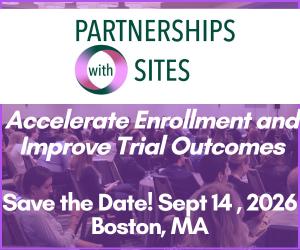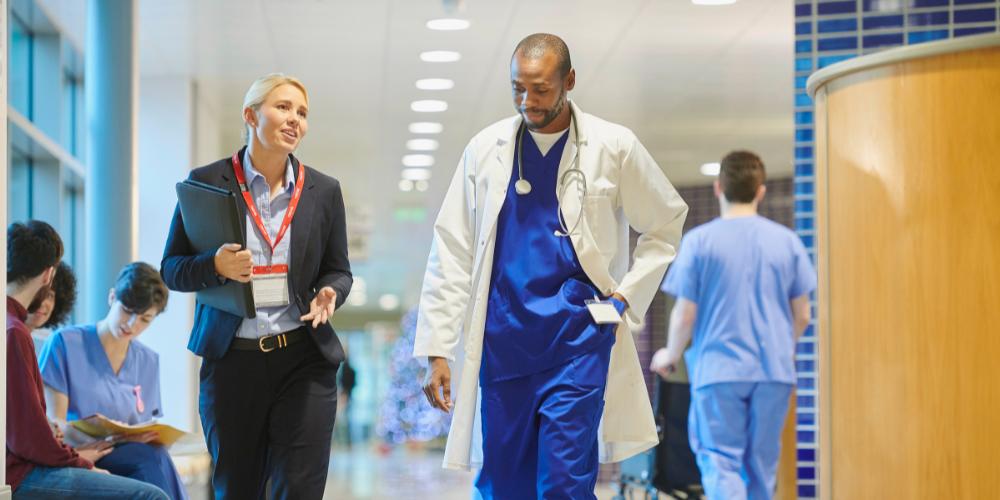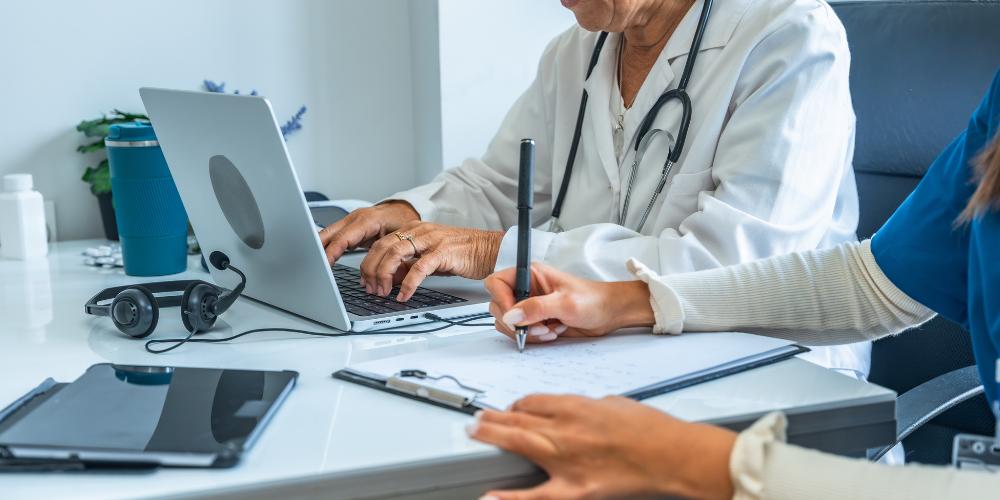Wake Forest on Building Community Trust
Bringing clinical trials to previously underrepresented communities requires showcasing trustworthiness. Goldie Smith Byrd, PhD, Director, Maya Angelou Center for Health Equity (MACHE) at the Wake Forest School of Medicine, shares how she has approached building trust and her advice for pharma on successful community engagement.

How did you begin forging new relationships with the community and establish trustworthiness?
One of the goals, when we began this work, was for the community to view Wake Forest School of Medicine as a resource and not an enemy. Because of atrocities like eugenics and the ways people have been treated, many in the community viewed our institution as an isolated institution, but not a place for them to be able to meet and mingle and look to for support. So one of the goals then was to create this bridge, and help people to see that this institution is here to help.
So when I came to Wake Forest, we took time to get to know different groups in the city and the county. It was more listening than talking. First, I reached out to community stakeholders. One stakeholder group was the African-American faith community. We asked faith leaders to share with us their perceptions of our institution and its involvement with healthcare and research in minoritized populations. We also did a feasibility study with them, to share with us what we needed to know, how they felt about us and to share what creating a community-academic partnership would look like.
How would you advise pharma organizations to address their own past reputations when trying to connect to the community?
Beat them to the punch. Pharma organizations should talk about it first, before the community gets to tell you about it. I always start with historical abuse in medicine and research. Not just Tuskegee, but all the way back to when Black people were enslaved. Then I come through Jim Crow and Reconstruction, but also the racism and discrimination that occurs today and how they contribute to health outcomes.
I connect the dots, and I try to do that before they begin telling us about ourselves as researchers and academics. After all, there's enough history, even relatively recent history, that anyone could bring up. When we are talking to communities about our research studies and clinical trials, we include that history, because we know that is what is in the minds of people, irrespective of whether they initiate the conversation.
"As we go into communities, we try to figure out what the priorities of that community are. It is all about understanding what is important, and aligning our interests within the context of what is important to that community."
How do you begin the conversation around clinical trials when interacting with people in the community?
First, you build relationships and camaraderie. Then, in my case, I talk about Alzheimer's and brain health, but in the context of general overall health. It’s about meeting people where they are. If I want to talk about Alzheimer's disease, I may not talk about the disease itself. Initially, I might talk about diabetes, hypertension and high blood pressure, or other factors that increase risk and set certain groups apart in terms of prevalence and burden.
As we go into communities, we try to figure out what the priorities of that community are. It could be transportation, so they can't get to the doctor or they might live in a food desert. These would be the most important things on their minds. It is all about understanding what is important, and aligning our interests within the context of what is important to that community.
What is some of the language you use when you eventually get to the topic of clinical trials?
It's important to know what the data show and how decisions and generalizations about research are made. If the data show that certain groups are less than 5% of participants in a study, but that the population is X% in the real world, then how will we know that the intervention or therapy works for you? So in order for companies or research institutions or medical schools to be able to generalize across populations, all populations have to be included.
We also give examples of therapies that don't work in certain populations based upon their ancestry. As an example, a person from West Africa, because of a different genetic background and life experience, may not process salt the same way as a Caucasian person of European ancestry. So if those two people have hypertension, the drugs they get might be different. We say, “This is why you would want to be included; this is why you want to be at the table.” And not only in terms of research participation, but also in terms of advocacy and what resources and supports are important to them.
"Researchers should not just walk into a community, get what they need, and hop out. You must figure out ways that are sustainable and scalable that maintain a presence in the community."
MACHE provides much more than just health resources to people; during COVID-19, for example, the Center provided food, job resources, etc. How does that work further the mission of the organization?
That was important as a part of the trust-building. We have a pastor’s network, which gives us direct access to our community. During COVID-19, the first thing we did was make sure that the pastors could get access to federal dollars that would keep their church doors open. We made sure they had training in how to use technology to remain engaged with their congregations. We made sure they had mental health support for themselves. We wanted to make sure we remained connected in meaningful and purposeful ways that were important to them.
And that relates to clinical trials. Researchers should not just walk into a community, get what they need, and hop out. You must figure out ways that are sustainable and scalable that maintain a presence in the community. For example, we did town halls around COVID-19 and chose topics they wanted to understand. We engaged our affiliated faculty at the institution. If someone, for example, wanted to know about pregnancy and COVID-19, we asked an OB/GYN faculty member to join us at the town hall. We were very intentional about listening to what was most important to them.
How has Wake Forest addressed certain needs of the community, such as the need for transportation?
I work with our Clinical and Translational Science Institute, directing the Integrating Special Populations Program and the new module for community- and stakeholder-engaged research. I bring community priorities and ideas to the institute. I talk with faculty about what the community is saying about research.
We address issues such as transportation, which is a barrier, or paying patients/participants for their time and participation. As a matter of fact, one of the things our center does is provide vouchers for people to travel, and provide language services for people who are Spanish-speaking. We also discuss issues around the Social Determinants of Health. As an example, housing is a major Social Determinant of Health that Wake Forest is addressing, by building low- and middle-income housing.
What are the barriers between clinical research and the community you’ve witnessed?
There are many barriers. Often, it is just a general lack of awareness; they don’t know about it. It is important for us to create communications, on multiple and diverse platforms, to engage diverse communities about the importance of clinical research. Often communities do not know us as researchers or as people who can be resourceful.
Another barrier is complex eligibility criteria that may exclude many people. Another is a lack of community engagement from researchers that leads to our not understanding the dynamic of a community of interest, which also leads to distrust. Often, our Center is asked, “How do I get into the Black community?” But they’re asking us after they’ve gotten the grant and they’ve not put in a budget sufficient to engage or authentically recruit diverse patients/participants. Unfortunately, community and stakeholder engagement, respect for community, and visibility are often afterthoughts.
There is also a lack of finding ways to remain in communities. There are many ways to accomplish this. Some investigators use a newsletter, cards, emails, announcements or an annual meeting to say thank you to participants. Being trustworthy requires dollars and time. You have to take the time, and be respectful, and address the historical and current atrocities that groups of people have gone through.
"We learned that if it’s difficult to get to our location, people will view us as difficult people. But if a site is engaging, trusting, feasible, and welcomes community, the community will come. Places matter."
What are other ways you’ve found success in connecting with your community?
One thing that I’m very excited about comes from feedback that the community was not happy coming to our campus. Wake Forest School of Medicine has agreed to build a Maya Angelou Center for Health Equity, that will be located in the heart of a marginalized community. We had the groundbreaking in October last year and considerable progress is being made.
What purpose will this center serve?
It will be a place where the community can gather for resources and education. It will be a trial site and we will have a clinic associated with it. It will be a place where people can come to learn about science and general health. There will be a workforce development component to it, as well as a place for young children to learn about future careers in science and medicine.
Early on, we conducted a feasibility study using focus groups, listening sessions and surveys. We asked the community, “What would the Maya Angelou Center for Health Equity look like in your ideal version?” We shared with them what we had at that time, and we asked, “Would you come?” The response was, “No. It’s too difficult getting around that campus. It's expensive parking.” We learned that if it’s difficult to get to our location, people will view us as difficult people. But if a site is engaging, trusting, feasible, and welcomes community, the community will come. Places matter.
For more information on Clinical Research as a Care Option, visit CRAACOevent.com. To listen to Dr Byrd present a keynote on making institutional changes to offer clinical research as care to a wider variety of patients, click here.






